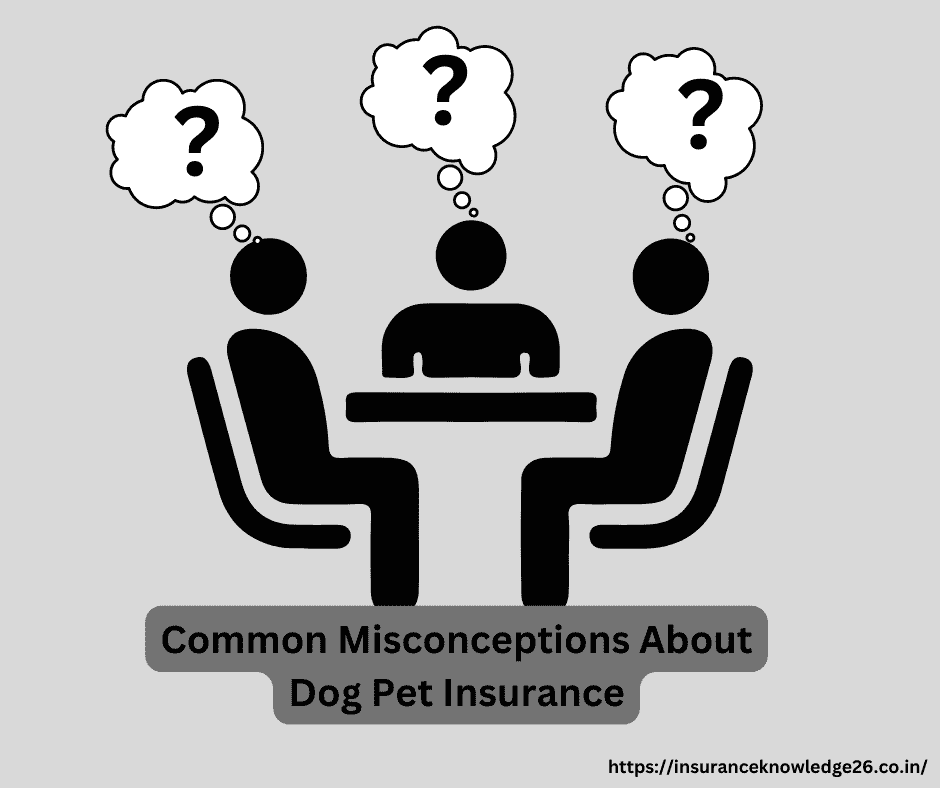Dog pet insurance has become an increasingly popular choice among responsible pet owners seeking to safeguard their furry companions’ health and well-being. However, despite its growing popularity, there are still several misconceptions and misunderstandings surrounding dog pet insurance. In this comprehensive post, we will debunk these common myths and provide clarity on the realities of dog pet insurance to help pet owners make informed decisions regarding their pet’s healthcare.

Dog Pet Insurance is Expensive
One of the most prevalent misconceptions is that dog pet insurance is prohibitively expensive. While it’s true that dog pet insurance comes with a cost, the premiums can be tailored to suit various budgets. The monthly or yearly premium largely depends on factors such as the chosen coverage level, deductible amount, the dog’s age, breed, and pre-existing conditions. By carefully selecting the right policy, pet owners can find a plan that provides adequate coverage at a reasonable cost.
Pre-Existing Conditions are Covered
This is a significant misconception that leads to disappointment for some pet owners. Dog pet insurance does not cover pre-existing conditions, which are any illnesses or injuries that existed before the insurance policy’s start date. It is crucial for pet owners to understand that pet insurance is designed to provide coverage for future unexpected events and not for existing health issues.
All Dog Breeds Are Covered Equally
While dog pet insurance generally offers coverage for all dog breeds, certain breeds may have specific exclusions or limitations due to their genetic predispositions to certain health conditions. It’s essential to carefully review the policy’s fine print and ask the insurance provider about any breed-specific limitations before purchasing a policy.
Pet Insurance Covers Everything
Dog pet insurance is designed to cover unexpected accidents, injuries, and illnesses, but it does not cover routine or preventive care. Routine vaccinations, flea and tick treatments, and annual check-ups are typically not covered. However, some insurance providers offer optional wellness plans that include coverage for preventive care at an additional cost.
Pet Insurance is a Waste of Money
Some pet owners believe that pet insurance is unnecessary and a waste of money. However, unexpected accidents and illnesses can occur at any time, leading to significant veterinary expenses. Pet insurance provides financial protection and peace of mind during such challenging situations, making it a valuable investment for many pet owners.
Pet Insurance Reimbursement is Instant
Pet insurance operates on a reimbursement basis, which means pet owners need to pay the veterinarian directly for the treatment and later file a claim for reimbursement. The reimbursement process can take time, depending on the insurance provider’s procedures and the complexity of the claim. It’s essential to be prepared for this process and have a separate fund for veterinary expenses if needed.
Young Pets Don’t Need Insurance
Some pet owners believe that young and healthy pets do not need insurance. However, accidents and illnesses can affect pets of all ages. Insuring a pet while they are young and healthy can help establish continuous coverage and avoid potential exclusions for pre-existing conditions that may develop later in life.
Pet Insurance is Only for Sick Pets
While pet insurance does provide coverage for unexpected illnesses, it also covers accidents and injuries. Accidents can happen at any time, such as a dog getting hit by a car or ingesting something harmful. Pet insurance ensures that owners can provide the best medical care without the added financial burden.
Insurance Premiums Will Increase Significantly
Some pet owners worry that insurance premiums will skyrocket after filing a claim. While it is possible for premiums to increase over time due to factors such as the pet’s age and rising veterinary costs, a single claim is not likely to result in a dramatic premium increase. Additionally, some insurance providers offer fixed-rate premiums to provide more predictability.
All Vet Clinics Accept Pet Insurance
While most licensed veterinarians accept pet insurance, it is essential to confirm with the insurance provider and the veterinary clinic before seeking treatment. Some insurance companies may have a network of preferred providers, and visiting a clinic outside the network might affect the reimbursement process.
Dog pet insurance is a valuable tool for pet owners seeking financial protection and peace of mind when it comes to their furry friend’s health. By debunking common misconceptions surrounding dog pet insurance, we hope to encourage more informed decisions about pet insurance coverage. Remember, each policy is unique, so it’s crucial to carefully review the terms and conditions, ask questions, and understand the coverage limitations and exclusions before choosing the best dog pet insurance plan for your beloved canine companion. With the right insurance coverage, pet owners can focus on cherishing every moment with their furry friend without worrying about unexpected veterinary expenses.
Disclaimer
The information provided in this post is based on general knowledge and may not be up-to-date or applicable to specific insurance products or regulations in your jurisdiction. Insurance policies and regulations can vary widely, so it’s essential to research and verify information with local authorities or insurance providers.

